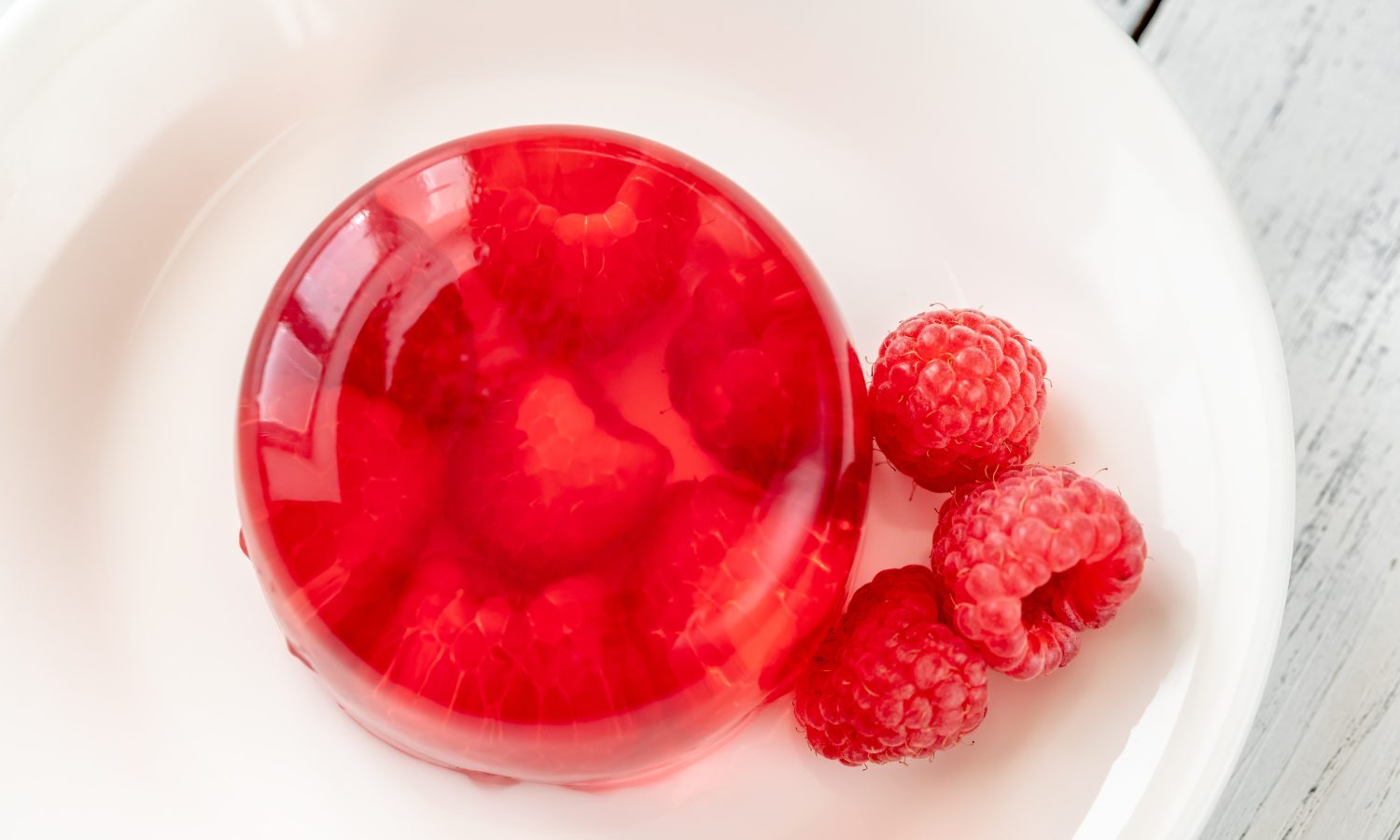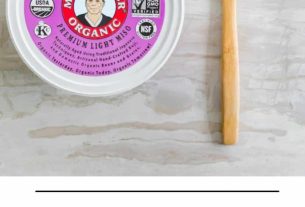Jelly, a sweet indulgence that can transform an ordinary slice of bread into a delectable treat.
We’ve all had that one jar of forgotten grape jelly lurking in the fridge, the question remains – does jelly go bad?
In this intriguing exploration, we uncover the secrets of jelly expiration, delve into the realm of off odors and molds, and reveal the proper storage techniques to keep your jelly delicious.
Join us as we journey into the captivating world of jelly preservation and discover why knowing the answer to this question is more important than you think.
does jelly go bad
Yes, jelly can go bad.
While it can remain safe to consume past its expiration date, the texture, color, and flavor may change after the best quality period.
Signs of spoiled jelly include off odor, off-color, strange taste, and visible mold.
It is important to discard any jelly that shows these signs.
Frozen jelly can extend its shelf life, but it may lose some texture and flavor quality.
It is best to consume jelly within 6 months to a year once opened, and within a year past its expiration date if unopened.
Eating expired jelly can potentially lead to food poisoning, so it should be avoided.
Key Points:
- Jelly can go bad, with changes in texture, color, and flavor.
- Signs of spoiled jelly include off odor, off-color, strange taste, and visible mold.
- It is important to discard any jelly showing these signs.
- Frozen jelly can extend shelf life, but may lose texture and flavor quality.
- Best to consume opened jelly within 6 months to a year, and unopened within a year past expiration date.
- Eating expired jelly can potentially lead to food poisoning, so it should be avoided.
does jelly go bad – Watch Video
💡
Pro Tips:
1. Contrary to popular belief, unopened jars of commercially-produced jelly can last indefinitely when stored in a cool and dry place. The high sugar content helps preserve the product and inhibit the growth of bacteria.
2. Homemade jellies, on the other hand, have a shorter shelf life due to the absence of preservatives. They typically remain fresh for about 1 to 3 weeks when refrigerated.
3. Jellies made from fruits with higher acidity, such as citrus fruits, have a longer shelf life compared to those made from low-acid fruits, like apples or pears. The acidity acts as a natural preservative.
4. While mold growth is the primary indicator that jelly has gone bad, changes in color, texture, or smell can also indicate spoilage. If the jelly becomes slimy, develops an off-putting odor, or exhibits unusual discoloration, it’s best to discard it.
5. Properly sealed and refrigerated jelly can sometimes experience sugar crystallization. Although it may alter the texture, crystallization does not render the jelly unsafe to consume. Simply reheating the jelly should dissolve the crystals and restore its original consistency.
1. Refrigeration And Tight Covering: Maximizing The Shelf Life Of Opened Grape Jelly
To ensure the longevity of opened grape jelly, refrigeration is essential. Refrigerating the jelly helps to preserve its freshness, flavor, and quality. Additionally, tightly covering the jelly jar prevents air exposure, which can lead to spoilage.
By refrigerating opened grape jelly and keeping it tightly covered, you can significantly extend its shelf life. This storage method effectively slows down the growth of bacteria, mold, and yeast, thereby preserving the jelly’s taste and texture for a longer period.
2. Best Quality Period: How Long Opened Grape Jelly Can Stay At Peak Quality
While opened grape jelly can still be consumed after its best quality period, it is important to note the recommended timeframe for peak quality. Opened grape jelly can maintain its best quality for approximately 1 year when continuously refrigerated and tightly covered.
It’s worth mentioning that the expiration date on the jelly jar serves as an estimate rather than a safety date. This date indicates how long the jelly is expected to remain at its peak quality. Therefore, after the specified time, the texture, color, or flavor of the jelly might change, but as long as it is stored correctly and shows no signs of spoilage, it is still safe to consume.
3. Expiration Date: Understanding Its Significance For Grape Jelly
The expiration date on a jar of grape jelly should be taken into consideration, but with an understanding of its true meaning. The date labeled on the packaging signifies when the jelly will likely start to lose its peak quality rather than becoming unsafe to eat.
It is important to note that even if the expiration date has not passed, the quality and flavor of the jelly may have diminished. Therefore, it is crucial to rely on your senses and inspect the jelly for signs of spoilage before consuming it.
4. Changes In Texture, Color, And Flavor: What To Expect As Jelly Ages
As jelly ages, certain changes in its texture, color, and flavor can occur. These changes may be noticeable after the best quality period has passed. However, it is essential to note that these alterations do not necessarily render the jelly unsafe to consume.
The texture of aged jelly might become slightly different, such as it becoming runny, excessively thick, lumpy, or grainy. The color may darken or appear off, while the flavor may slightly deviate from its original fruity taste. It is crucial to keep in mind that these changes are natural and do not indicate spoilage.
5. Signs Of Spoilage: When To Discard Grape Jelly
While aging jelly does not automatically mean it has spoiled, it is essential to be aware of the signs that indicate spoilage. If the grape jelly develops an off odor, flavor, appearance, or if mold appears, it should be discarded immediately.
Spoiled jelly can have a darkened color, an off texture, a strange taste, visible mold growth, or the expiration date has passed. If any of these signs are evident, the jelly should not be consumed, as it can pose a risk to your health.
6. Identifying Spoiled Jelly: Separation, Off-Color, Off Odor, Strange Taste, And Mold
To identify spoiled jelly, pay attention to the presence of the following specific characteristics:
-
Separation of liquid and solids: If you notice that the jelly has separated into liquid and solids, it may be a sign that it has spoiled.
-
Off-color: Compare the jelly’s current color to its original appearance. If it has an off-color and looks different, it could indicate spoilage.
-
Off-putting odor: Sniff the jelly. If it has a strange or unpleasant odor, it is likely spoilt.
-
Strange taste: Tasting the jelly is not recommended, but if you notice an unusual or unpleasant taste, it’s a clear indication that the jelly is spoiled.
-
Visible mold growth: Check for any visible mold growth on the jelly. Mold is a clear sign of spoilage.
If you observe any of these signs, it is crucial to immediately discard the jelly. Consuming spoiled jelly can lead to foodborne illnesses caused by harmful bacteria or mold.
7. Diminished Quality And Flavor: Even If The Expiration Date Has Not Passed
Even if the expiration date on the jelly jar has not yet been reached, it is possible for the quality and flavor of the jelly to diminish over time. Therefore, it is always advisable to check the jelly’s freshness before consuming it.
If the jelly appears to have changed in color, texture, or smell, it may be an indication that its quality has been affected. The best way to determine its suitability for consumption is to rely on your senses. If it no longer meets your expectations, it is better to discard it than risk consuming a subpar product.
8. Sniff Test: Detecting A Fresh And Fruity Or Off-Putting Smell In Jelly
To determine the freshness of grape jelly, a simple sniff test can be conducted. Fresh jelly typically has a sweet and fruity aroma that is pleasant to the senses. If the jelly emits an off-putting or sour smell, it is an indication that it has likely spoiled and should be discarded.
Trusting your sense of smell is crucial in evaluating the quality and edibility of grape jelly. Remember, if in doubt, it is always better to be safe than sorry.
9. Texture Changes: Runny, Excessively Thick, Lumpy, Or Grainy Jelly
As grape jelly ages, changes in its texture can occur. These changes might include the jelly becoming runny, excessively thick, lumpy, or grainy. These alterations are a natural result of aging and do not necessarily indicate spoilage.
However, if the texture has changed significantly or is accompanied by other signs of spoilage, it is best to err on the side of caution and discard the jelly to avoid any potential health risks.
10. Timeframe For Consumption: Recommendations For Opened Jelly
To ensure the best quality and safety of opened jelly, it is recommended to consume it within 6 months to a year. This timeframe takes into account the gradual changes in texture, color, and flavor that occur as jelly ages.
On the other hand, unopened grape jelly can last up to a year past its expiration date, as long as it has been stored properly in the refrigerator. Similarly, homemade jelly can last for 6 to 12 months when stored in the fridge.
For sugar-free jelly, it is advised to consume it within 6 to 9 months in the fridge, while low sugar jelly can last 8 to 9 months. It is essential to follow these guidelines to ensure the best taste and quality of your jelly.
Furthermore, jelly can be frozen to extend its shelf life for over 12 months. However, it is worth noting that freezing jelly may result in some texture and flavor deterioration. When freezing jelly, ensure it is stored in an airtight container, leaving some headspace for expansion.
In conclusion, the shelf life of opened grape jelly can be maximized by refrigeration and tight covering. While the jelly may experience changes in texture, color, and flavor as it ages, it can still be safe to consume as long as there are no signs of spoilage. It is crucial to rely on your senses and inspect the jelly for any indications of spoilage before consuming it. By following these guidelines, you can enjoy your grape jelly while ensuring its freshness and quality.
💡
You may need to know these questions about does jelly go bad
How do you know if jelly is bad?
One way to determine if jelly has gone bad is by examining its appearance. If you notice any mold or discoloration, it is a strong indication that the jelly has spoiled and should not be consumed. Another clue to the jelly’s condition is its texture. If the jelly has become lumpy or slimy, it is likely past its prime. Trusting your senses of smell, sight, and touch can help you determine if it’s time to bid farewell to that jar of jelly.
Can I eat expired jelly?
Consuming expired jelly is not recommended, as when the jelly expires, its quality and nutritional value degrade. The stale contents of the expired jelly can be more prone to bacterial contamination, which may result in detrimental consequences for your health. Consuming expired jelly could lead to potential foodborne illnesses or gastrointestinal discomfort, making it essential to prioritize food safety and opt for fresh and unexpired alternatives.
How long is jelly good after expiration date?
Jelly is typically good for consumption for a similar span of time as jam, lasting around 6-12 months beyond the suggested “best by” date. However, it is important to note that this duration may vary depending on various factors, such as the specific ingredients used, storage conditions, and the overall quality of the product. Properly stored jelly can often remain safe to eat even after passing its expiration date, but it is always recommended to carefully inspect the jelly before consuming it, including its appearance, texture, and smell, to ensure it is still in a good state for consumption.
Does jelly expire in the fridge?
Yes, jelly does have an expiration date even when stored in the fridge. While unopened jars can be stored for up to 12 months in the pantry, once opened, it is best to consume jelly within 6 months when refrigerated. Over time, exposure to air and bacteria can cause jelly to spoil, affecting its taste, texture, and quality. Therefore, it is important to check the expiration date and consume jelly within the recommended timeframe to ensure the best flavor and freshness.
Reference source
https://www.marthastewart.com/8269604/should-you-refrigerate-jams-jellies
https://thekitchencommunity.org/does-jelly-need-to-be-refrigerated/
https://cindysbackstreetkitchen.com/can-you-eat-expired-jelly/
https://www.eatbydate.com/other/condiments/how-long-does-jam-last-shelf-life-expiration-date/



